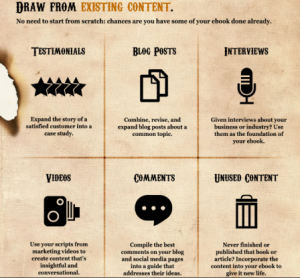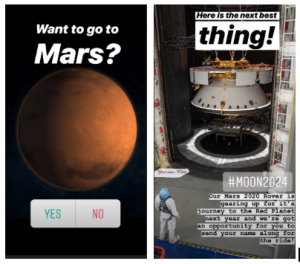Revolutionize your marketing with pace-layered planning inspired by nature’s resilience, balancing quick adaptations with long-term stability.
Nature is a genius at adaptation. For over 3 billion years, organisms acclimated to the earth’s evolving environment with elegant strategies. The annual marketing plan’s reputation isn’t quite as respected. It’s an activity usually faced with dread. However, planning works better if marketers take a cue from how nature approaches change.
“Oh, goodie! It’s planning and budgeting season,” said no marketer ever. Planning would be easy if we could accurately predict the future. However, markets are volatile, uncertain, complex and ambiguous (VUCA). Regardless of the effort put into planning, an annual marketing plan is out of date when it is released.
This uncertainty about what’s ahead contributes to the stress organizations feel as they attempt to hammer down plans. Struggles crop up as internal political debates, anxiety over funding prospects, conflicting priorities, shifting targets and worry about looming macro-shifts like AI. Yet planning is essential for coordination and necessary to advance the enterprise mission.
Learning from how nature accommodates change
In his book, “The Clock of the Long Now: Time and Responsibility,” Stewart Brand, an American writer, editor and entrepreneur, explains how nature’s ecosystems absorb the shock of change by varying speeds of adaptation. Inspired by the work of mathematician and physicist Freeman Dyson, Brand describes a pace-layered model where some elements change quickly (“fast learns”) while others change slowly (“slow remembers”).
Balancing a variety of time scales produces resilience. For example, pine needles on individual trees in a conifer forest change yearly, while the tree crown unfolds over several years. The overall forest ecosystem evolves over thousands of years. This multi-paced evolution allows the system to thrive by absorbing stresses like parasites and weather.
Pace layering can be adapted for marketing by accommodating tempos appropriate for various aspects of the plan. For legal purposes, some parts of the marketing plan must march to the dominant annual rhythm of the financial calendar, but this cadence doesn’t work for everything. Force-fitting everything into annual cycles is just a convention, not a necessity, and some companies are challenging this assumption.
Pace layering the marketing plan
Brand’s six-layered model applies nature’s process to a sweeping recommendation for a healthy civilization. While businesses are unlikely to have such an ambitious goal, layered thinking still applies to marketing’s job. The key is to assess what change tempo is for each initiative.
Plan frequently for elements that change frequently
The job of fashion, what Brand calls the top layer of the model, is to be quick and engaging. “Try this! No, no, try this!” Everything customer-responsive must be able to change quickly as customer behavior does. Frequently shifting elements include digital campaigns, creative execution, content and sales plays.
Activities at this top layer, Brand says, should be free to experiment as creatively as society tolerates. Continual adaptation allows for a more accurate response to what’s happening and improves learning and innovation and increases the ability to take advantage of emerging opportunities.
Accepting more frequent intervals for some parts of the plan and budgets may be the biggest “aha” in a pace-layered marketing plan. Agile teams will have a head start if they’ve adopted the practice of “planning at the last responsible moment.” Otherwise, it may take a while for an organization to adjust to a highly flexible process where some parts of the budget are rented for a quarter or so instead of guaranteed a year in advance.
To make this work, nothing should come as a surprise. Frequent checkpoints, data sharing and lots of dialog help. Teams closest to customers should be empowered in this layer of planning because they have the best view of what’s happening and can respond to change the fastest.
Update the overall marketing budget and big programs annually or semi-annually
The second layer of Brand’s model is commerce, which we would all recognize as economic activities. The innovation and learning that emerges from the top layer drives commerce’s energy. Commerce’s role is to resource the other layers — above and below. The annual plan continues to distribute the funds to the overall marketing budget.
An annual cadence (with a semi-annual update) is also the best time to conduct activities such as preparing enablement packages to support the top layer’s customer actions, communicating priorities, setting KPIs and establishing the content and editorial calendars. Major campaigns, sales playbooks and big events are also set in motion annually. This layer contains the workstreams that marketing undertakes for multi-year initiatives.
Multi-year initiatives
The next three layers of Brand’s model are infrastructure, governance and culture. Changes here are far-reaching and will drive businesses in significant new directions. These layers resist instantaneous change (regardless of what the plan mandates) and evolve more gradually than the frantic pace of fashion/customer programs or the relentless march of commerce.
Businesses can find this pace — especially the people piece — frustratingly slow. But they benefit from a slower pace for certain tasks. Infrastructure, governance and culture are the remembering layers. A higher degree of stability provides structure, coherence and guidance to the system.
Anyone who worked for a chaotic company that reorganizes every year (culture), regularly attempts to rip and replace the tech stack (infrastructure) or annually manipulates the sales compensation plan (governance) will attest to the desirability of a more measured pace.
A thoughtful replanning every three to five years works for initiatives in these layers. Actions to realize the plan can be parsed into six-month or quarterly investment and workstream cycles that are reviewed and adjusted regularly. Initiatives for these longer layers include:
- Brand strategy.
- Incorporating major new technologies.
- Preparing to serve new generations of “buyers and hires.”
- Adjustments to regulation changes and media trends.
Nature as its own layer
The lowest, longest and most powerful layer in Brand’s model is nature. In the past, businesses might not have considered nature in their plans, but nature has the biggest impact, a fact we are all becoming increasingly aware of.
Businesses should consider the impact of the natural layer in their plans to achieve optimal health for the company, society and the earth itself.
Succeeding at pace-layered marketing plans
Marketing leaders who embarked on a pace-layered planning journey shared some success factors with me. It takes lots of two-way conversations between strong business-oriented leaders who think holistically about marketing, the company and the market.
A little selfishness in the process is OK. You want leaders to be passionate about their area, so expect some healthy debate between the demands of the different layers. A culture that manages conflict well is beneficial.
To keep the system in optimal health, the success of all layers must be balanced. No layer, including commerce, should dominate. It helps if there is sufficient budget and staffing resources so that the company reasonably achieves desired outcomes.
Warren Buffet said, “Time is the friend of a wonderful company, the enemy of the mediocre.” Pace layering inspires businesses to think about the interplay of time and the job of marketing. Together, they make a powerful force.
The post Nature’s inspiration for transforming your marketing plan appeared first on MarTech.
MarTech(4)
Report Post







